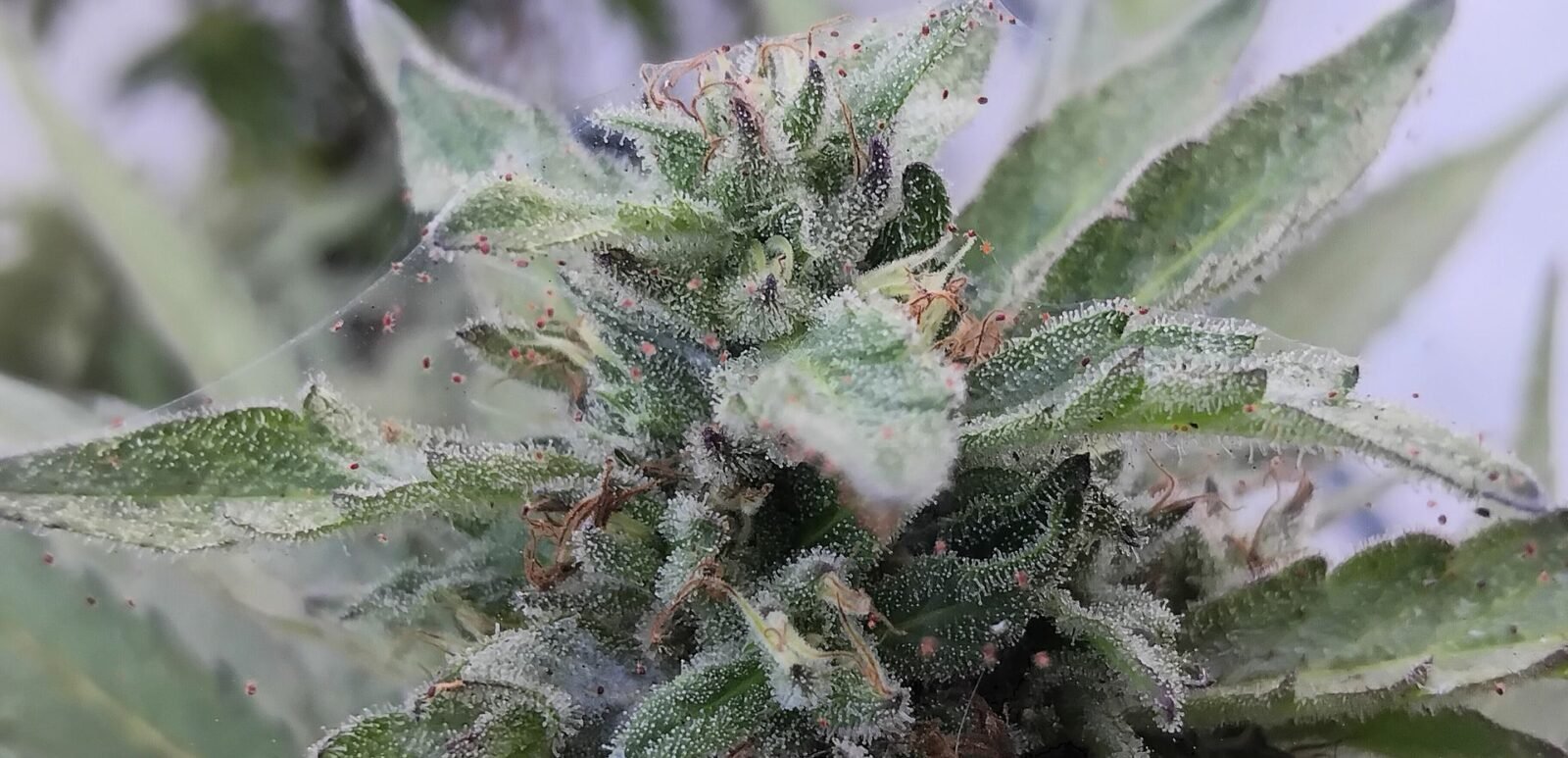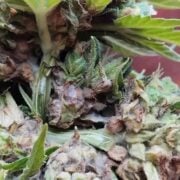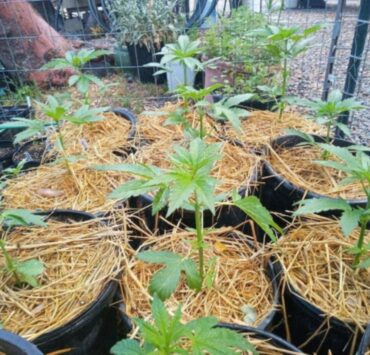Gold Header Ad
reserve your ad hereInternal Pest Management and Growing Cannabis Plants
This article will walk you through the most common cannabis plant pests, what environments they thrive in, how to identify early signs of damage, and, most importantly, how to get rid of them. I’ll also cover natural predators and organic treatments to give you the advantage as an indoor grower!
Common Cannabis Pests and How to Handle Them
Aphids – Identification:
Aphids come in various colors, ranging from green, yellow, black, grey, red and can often be found in clusters on the undersides of cannabis leaves. They are sap-sucking insects that drain the plant of nutrients, weakening its overall health. Aphids are also asexual, meaning females can reproduce without males, and they give birth to live young instead of laying eggs.
This makes their population boom rapidly in a short period. Aphids love warm, moist environments. A grow room temperature between 20°C and 25°C is ideal for their reproduction. Conversely, temperatures closer to 10°C will drastically slow their activity.
Signs of Damage:
- Wilting or drooping leaves
- Slowed plant growth
- Sticky residue known as “honeydew”
- Yellowing leaves
- Dehydrated appearance
- Root discoloration
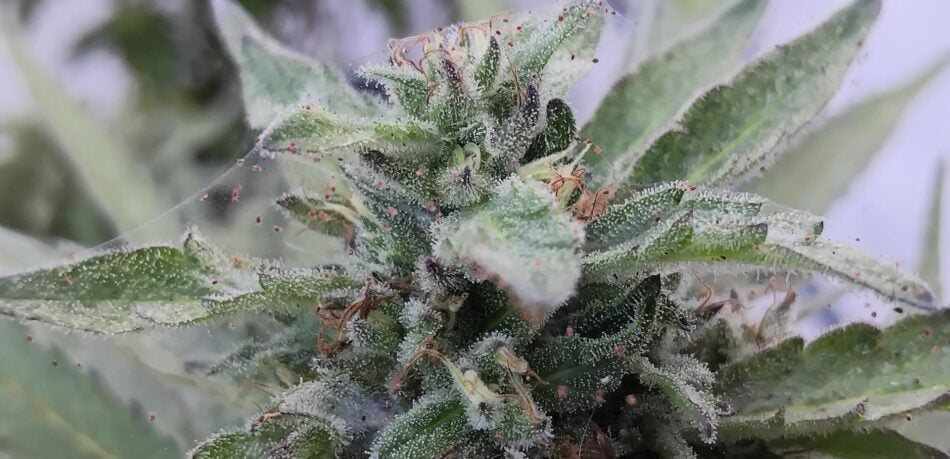
How to Eliminate Aphids:
There are different ways to eliminate aphids when you notice them on your plants. Ow depending on how early or late the infestation is, some methods will be more effective than others. You can try to using a spray bottle to and carefully and accurately spray the plant with water to knock aphids off, or try defoliating the leaves off the plant
Another way is to use insecticidal soap or neem oil. These two agents will cover the leaf surface and should do a good day at either suffocating them. My favourite method that does not invoice spraying anything, is to introduce natural predators into your garden. Examples of predators that fight against an aphid population include ladybugs, parasitic wasps, lacewings, hoverflies, damsel bugs, and minute pirate bugs.
If you catch an aphid infestation early, a simple spray of soapy water can go a long way. It strips their waxy coating, leading to dehydration. For severe infestations, introduce beneficial insects, such as ladybugs, and consider defoliating heavily infested leaves to limit the spread.
Thrips – Identification: Thrips are small, slender insects that can range in color from pale yellow to brown, black, or orange. Some even have a reddish tint. These pests are also asexual, and their eggs are laid inside plant tissue, making them hard to detect early. Thrips suck plant sap, and their larvae can cause just as much damage as the adults. Thrips thrive in warm, dry environments between 20°C and 37°C. While they can survive at lower temperatures, their reproduction slows significantly.
Signs of Damage:
- Silvery or bronze streaks or spots on leaves
- Curled or brittle foliage
- Tiny black dots of faeces
- Scarring and discoloration
- Weak, paper-thin leaves
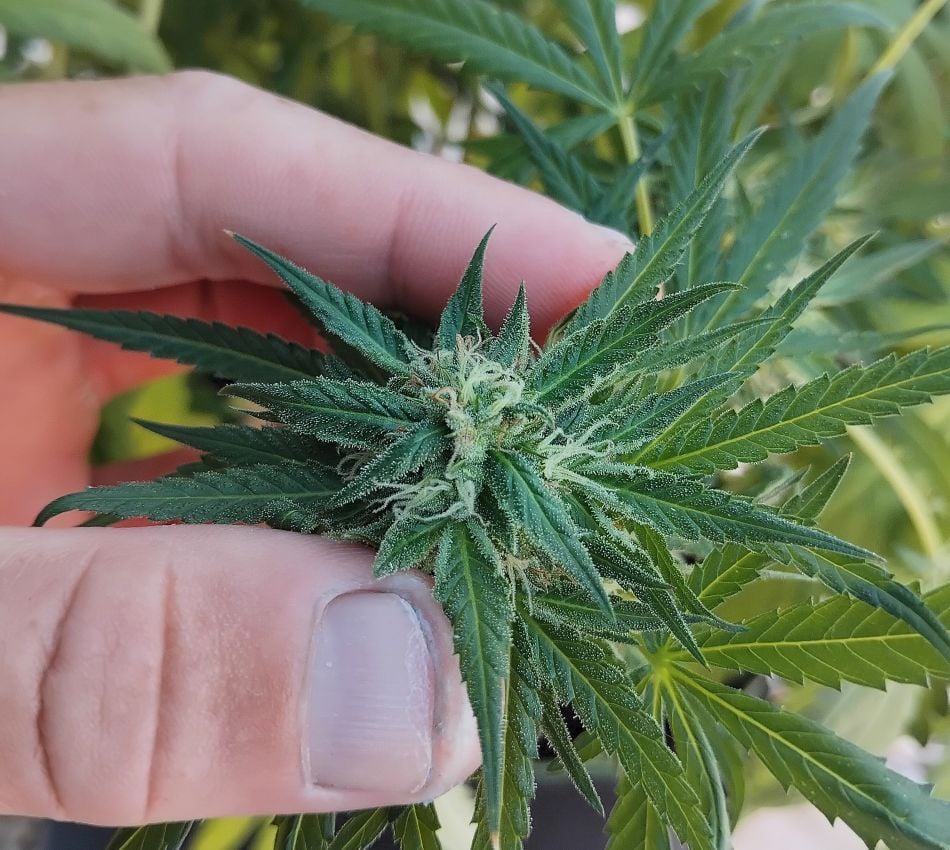
How to Eliminate Thrips:
Thrips are tiny bugs that can quickly damage plants; however, there are a few manual methods to deter them and in a best-case scenario, kill them. You can try and rinse your plants with water or use a high pressure spray, use insecticidal soap or neem oil, dust the leaves with diatomaceous earth or introduce predators. You can use minute pirate bugs, rove beetles or lacewing larvae to help combat a thrip infestation.
Avoid overwatering, as this can contribute to a favorable environment for thrips. Neem oil mixed with mild soap makes an excellent organic spray, just be sure to apply it only during the vegetative stage and never on buds. Another organic solution is to use companion plants inside your grow room.
Spider Mites – Identification:
Spider mites are a terrible pest and can give you a mild heart attack when you do notice they have chosen to take your indoor garden over! Spider mites are perhaps the most dreaded pest in cannabis cultivation. They range in color from red, green, and yellow to orange or brown. Due to their tiny size and rapid reproduction, spider mites can quickly overrun a grow space. A single female can lay up to 60 eggs at once, most of which will also be female.
Their presence is often signalled by webbing near the buds and stems. Spider mites love warm, dry conditions, especially during the flowering stage. They thrive between 20°C and 40°C, with hotter temperatures accelerating their life cycle. They’re more likely to attack stressed or weakened plants.
Signs of Damage:
- Tiny yellow or white specks on leaves
- Webbing on buds and stems
- Wilting, weak growth
- Bronze-tinted foliage
How to Eliminate Spider Mites:
You best act fast when dealing with the pesky spider mite due to the fact they can mature into egg laying adults within 10 days, and cause havoc. You can spray spider mites, or wipe them off using tissue paper soaked with isopropyl alcohol, however that will not neccesarily solve an infestation.
It is more effective to use neem oil or insecticidal soap, however, be careful to not spray buds. Sometimes, it is best to introduce natural predators, such as ladybugs, lacewings, or minute pirate bugs, and allow them time to fight off the mites and eat their eggs.
I cannot stress enough that time is critical with spider mites! They can go from egg to adult in just 10 days. As soon as you spot them, act. If you recently brought in clones, they could be the source. Always quarantine new plants and introduce predators as early as possible.
Final Thoughts on Cannabis Pest Control
The best defense against cannabis pests is early detection and fast action. Don’t wait until you see visible damage. Inspect plants regularly, especially the undersides of leaves, during the vegetative stage and flowering period. Keep your grow area clean and well-ventilated!
Whenever possible, opt for organic and biological pest control methods rather than synthetic pesticides, especially during the flowering stage. Introduce predatory insects, use neem oil sparingly, and continually monitor environmental conditions, such as humidity and temperature, to make your grow room less inviting to pests.
Feature photo: This flowering plant is suffering from a spider mite infestation. Photo credit: Stoney Tark
Gold Scrolling Footer Ad
reserve your ad hereStoney Tark is a prolific writer based in Europe. He is known for his articles about cultivation, breeding, hash making, interviews, and especially his top tips. Over the last 11 years, he has become one of the most recognized writers on the planet. Head writer for cultivation for Soft Secrets Magazine, as well as his work for High Times Magazine, Skunk Magazine, Garden Culture Magazine, Weed World Magazine, The Emerald, Grow Magazine, Cannabis Culture Magazine, Dutch Passion, The Super Sativa Seed Club, Paradise Seeds, Humboldt Seed Organization, Atami and ILGM, Stoney is also a breeder for Prana Medical Seeds, sponsored by SANlight, an author of Stoney Tark’s Top Tips on Growing Cannabis available on Amazon, and a producer of YouTube channel The Roll Models Podcast.


